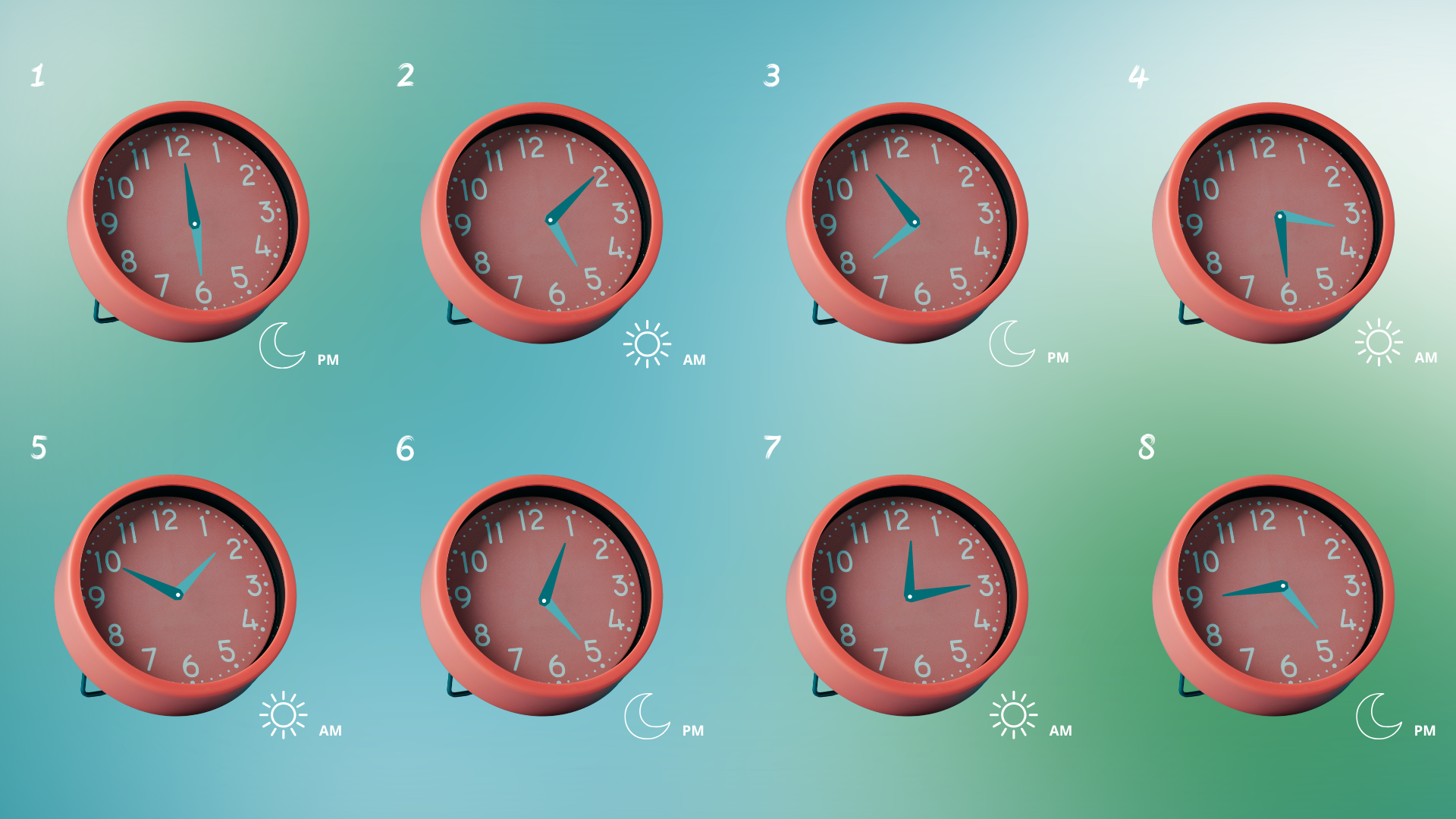Learn how to ask and tell time in Polish with useful words like godzina (hour), minuta (minute), and zegarek (watch). Practice common phrases such as "Która jest godzina?" and expressions for scheduling meetings and daily activities.
Vocabulary (16) Share Copied!
Exercises Share Copied!
These exercises can be done together during conversation lessons or as homework.
Exercise 1: Reorder sentences
Instruction: Make correct sentences and translate.
Exercise 2: Match a word
Instruction: Match the translations
Exercise 3: Cluster the words
Instruction: Assign the following words to the appropriate category to better understand how to tell the time and read the clock.
Elementy zegara i określanie czasu
Określenia czasu i dni
Ćwiczenie 4: Conversation exercise
Instrukcja:
- Która godzina jest na zdjęciach? (What time is it in the pictures?)
- Która godzina? (What time is it right now?)
Teaching guidelines +/- 10 minutes
Example phrases:
|
Jest w pół do czwartej. It's half past 3. |
|
Jest czwarta po południu. It is four o'clock in the afternoon. |
|
Za piętnaście dwunasta. It's a quarter to twelve. |
|
Jest dziesięć po piątej. It is ten after five. |
|
Jest kwadrans po dziesiątej rano. It's quarter past ten in the morning. |
|
Jest pierwsza w nocy. It is one o'clock at night. |
| ... |
Exercise 5: Dialogue Cards
Instruction: Select a situation and practice the conversation with your teacher or fellow students.
Exercise 6: Multiple Choice
Instruction: Choose the correct solution
1. O której godzinie ______ do pracy?
(What time ______ do you come to work?)2. Zawsze ______ punktualny na spotkaniach.
(I am always ______ punctual for meetings.)3. Jutro ______ pierwsza godzina lekcji.
(Tomorrow ______ is the first lesson hour.)4. Która ______ godzina?
(What time ______ is it?)Exercise 7: Daily meeting about time
Instruction:
Verb Tables
Przychodzić - Przychodzić
Czas teraźniejszy
- ja przychodzę
- ty przychodzisz
- on/ona/ono przychodzi
- my przychodzimy
- wy przychodzicie
- oni/one przychodzą
Być - Być
Czas teraźniejszy
- ja jestem
- ty jesteś
- on/ona/ono jest
- my jesteśmy
- wy jesteście
- oni/one są
Don't see progress when learning on your own? Study this material with a certified teacher!
Do you want to practice Polish today? That is possible! Just contact one of our teachers today.
Introduction to Telling the Time in Polish
This lesson focuses on how to tell time and read a clock in Polish at an A1 beginner level. You will learn common expressions, vocabulary, and grammatical structures related to asking for and stating the time in daily situations.
Key Vocabulary for Clock and Time
The lesson introduces essential words divided into two categories:
- Clock Elements: tarcza (clock face), wskazówka (hand of the clock), cyfra (digit), zegarek (wristwatch)
- Time Expressions: godzina (hour), minuta (minute), kwadrans (quarter), pół (half)
Useful Phrases and Sentence Structures
You learn how to ask and say what time it is, for example:
- Która jest teraz godzina? – What time is it now?
- Spotkanie zaczyna się o dziewiątej rano. – The meeting starts at nine in the morning.
- Mój zegarek pokazuje pięć po siódmej. – My watch shows five past seven.
- Pociąg odjeżdża za dziesięć ósma. – The train leaves at ten to eight.
Practical Situations and Dialogues
The dialogues simulate real-life conversations where time is an important element, such as asking the time at the office, at a bus stop, or ordering coffee with a pickup time. These contexts help you use time-related expressions naturally.
Verb Usage Related to Time
The lesson includes conjugation exercises with verbs commonly used when talking about time and daily routines, for instance:
- wstaję (I get up)
- przygotowuję (I prepare)
- jest (it is)
- zaczynam się (I start)
- pytam (I ask)
- spotykamy się (we meet)
- oglądam (I watch)
Note on Differences Between English and Polish Time Expressions
Polish time telling often uses the 24-hour clock in formal contexts, but in daily conversation, both 12-hour and 24-hour formats are common. Phrases like za dziesięć ósma literally mean "ten to eight," whereas English speakers might say "ten minutes to eight." The word kwadrans (quarter) and pół (half) are specifically used in expressions like za kwadrans (quarter to) or wpół do (half past). Asking for the time typically uses the phrase Która jest godzina? or more politely Przepraszam, która jest godzina?.









